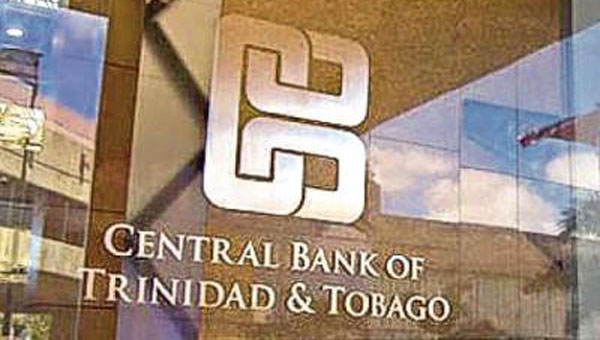PORT OF SPAIN, Trinidad and Tobago, February 25, 2019 (CMC) – The Central Bank of Trinidad and Tobago (CBTT) says the local economy should receive a boost in 2019, from the anticipated start-up of the Angelin gas platform during the first quarter, and other energy projects in the pipeline.
In its January 2019 Economic Bulletin, the CBTT said that the new developments will complement the boost to the energy sector from the Juniper field.
But it warned that domestic macro-economic management will need to be closely coordinated and alert in dealing with a rapidly-evolving external landscape, if the local economy is to continue its improvement.
According to the CBTT, there are important downside risks in 2019 that can affect the Trinidad and Tobago economy, which are related to uncertainty on the international front, including developments in nearby Venezuela, tensions among major trading nations, volatility in energy prices, Brexit, and swings in financial market earnings.
The bank said that natural gas output rose by one percent in the third quarter of 2018.
“Exploration and production activity, on the whole, was marginally lower, as there were also slips in crude oil production (11.3 percent) and in depth drilled and rig days recorded. Nevertheless, LNG production increased moderately (1.2 percent) despite maintenance work at Train 2 in September.”
The CBTT noted that refinery throughput, which was down by seven percent may have been affected by the winding down of operations at the state-owned Petrotrin refinery, while natural gas liquids output is being affected by the production of increasingly ‘drier’ natural gas.
It said petrochemical output was also generally weaker during the period. Methanol production was affected by outages at the M5000 and Atlas methanol plants, while downtime at Nutrien (formerly PCS Nitrogen) hampered the production of ammonia.
Preliminary data for the fourth quarter suggest that activity in the energy sector continued to be mixed, with strong influences of maintenance works and temporary shutdowns on output of some products.
In the non-energy sector, the CBTT said that indicators in the third quarter of 2018 present a mixed picture, suggesting that overall, a durable recovery, outside of the energy sector, is yet to take hold.
“Based on information on lower local sales of cement, as well as reduced production of mined aggregate, the Bank’s Quarterly Indicator of Economic Activity (QIEA) in the construction sector is estimated to have declined by 6.4 percent in the third quarter of 2018.
“However, growth in retail sales translated into Central Bank estimates of a 0.4 percent increase in distribution in the third quarter of 2018. Output in the manufacturing sector is estimated to have been relatively flat (-0.2 percent), mainly owing to lower reported activity in the assembly industry, chemical manufacturing industry and miscellaneous manufacturing, but activity increased in the food, drinks and tobacco industry (3.6 percent”.
The CBTT said that non-energy activity in 2019 is likely to be propelled by the seasonal acceleration in the execution of government’s capital program, in the second half of the fiscal year.
It said conditions in the labour market could remain challenging, given ongoing adjustments in public and private sector entities, and the need for new skill sets among workers, in dealing with more intense competition domestically and from external sources.
Inflation is expected to remain low, but the forecasted harsh, dry season could lead to a rise in the cost of local produce.
The CBTT added that low inflationary conditions persisted during the second half of 2018, a combination of measured growth in aggregate demand, monetary policy that managed liquidity conditions carefully, and low imported inflation.
Headline inflation measured 1.1 percent in December 3, 2018, down from 1.2 percent in July. The suppression of overall prices was led by declines in food prices, while core inflation was relatively stable.
The Central Bank said that the central government’s fiscal consolidation efforts resulted in a much lower deficit in the financial year 2017-18.
It said provisional estimates from the Ministry of Finance show that the central government fiscal accounts realized an overall deficit of TT$5.4 billion.
“This compares with a deficit of TT$13.5 billion in financial year 2016/17. The smaller deficit, which was financed by a combination of domestic and external borrowings, reflected an increase in revenue and a decline in expenditure.”
In December 2018, total public sector debt increased to TT$98.9 billion or 62.2 percent of gross domestic product (GDP) from the TT$95.5 billion or 61 percent of GDP, outstanding at the end of September 2018. New domestic borrowings by the central government amounted to TT$1.7 billion, while a TT$640 million bond was refinanced, the CBTT added.
The Central Bank said that growth was recorded in the commercial banking and the real estate and dwellings sub-sectors of the Index, in contrast to lower activity in the insurance and non-bank financial institutions.
Similarly, activity in the transport, storage and communications sector is assessed to have declined by 1.6 percent, because of lower levels of activity within the taxi (4.5 percent), truck (6.7 percent) and airline (0.9 percent) sub-industries.
These declines, together, outweighed an 8 percent improvement in port activity during the third quarter of 2018, the CBTT said.
 Pride News Canada's Leader In African Canadian & Caribbean News, Views & Lifestyle
Pride News Canada's Leader In African Canadian & Caribbean News, Views & Lifestyle





